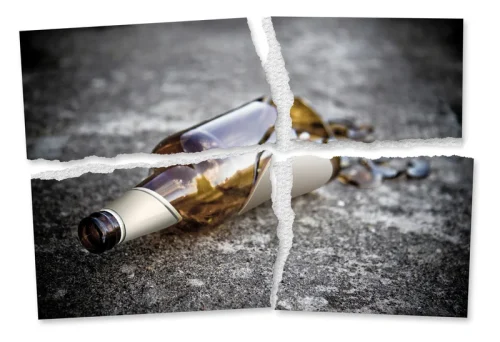
There are several treatment options available for AUD, and there’s no one-size-fits-all solution. Named after the famous writer Ernest Hemingway, you might not act drunk even if you’ve had a lot to drink. Make sure your loved one will be there but isn’t aware of what’s going on. Working with an addiction or intervention specialist can often be helpful, but some people arrange interventions on their own without professional help. If you’re under 30, this grassroots organization, which offers life skills, community chapters, and an opportunity to reduce the stigma around abuse issues, could be a good fit.
Bảo Phúc đơn vị thi công lắp đặt cửa - cổng - tự động chính hãng nhập khẩu
- Cửa tự động: https://baophuc.vn/san-pham/cua-tu-dong.html
- Cổng tự động: https://baophuc.vn/san-pham/cong-tu-dong.html
Công ty TNHH thiết bị cổng cửa tự động Bảo Phúc
- Website: www.baophuc.vn

Professional diagnosis
While having a drink after a long day might seem normal, it becomes problematic when alcohol is consistently your go-to for dealing with difficult emotions. Psychological addiction refers to how drugs, alcohol, physiological dependence on alcohol and other mind-altering substances affect the mind and emotions. When a person takes a drug or consumes alcohol and they feel “buzzed,” high, or relaxed, these feelings also affect their moods and emotions.

How Alcohol Affects Relationships: Understanding Codependency and How to Heal
Understanding this dynamic is the first step toward healing and reclaiming a healthier, more fulfilling life. For example, disordered drinking is excessive and often costly, and is commonly referred to as binge drinking. While this may not always meet the clinical criteria to be considered alcohol dependence, these patterns of behavior still pose a significant risk factor to one’s physical or mental health.
Increased Drinking Behaviors Over Time
Socially, alcoholism may be tied to family dysfunction or a culture of drinking. Mild is classified as 2 to 3 symptoms, moderate is classified as 4 to 5 symptoms, and severe is classified as 6 or more symptoms, according to the DSM-5. Many people with alcohol use disorder hesitate to get treatment because they don’t recognize that they have a problem. An intervention from loved ones can help some people recognize and accept that they need professional help. If you’re concerned about someone who drinks too much, ask a professional experienced in alcohol treatment for advice on how to approach that person.
- Having support and seeking professional treatment increases the chances for recovery from AUD.
- Here are several strategies to help you break free from this pattern and restore balance in your life and relationships.
- Many people with alcohol use disorder hesitate to get treatment because they don’t recognize that they have a problem.
- With less access, it is less likely that an individual develops alcoholism.
- Horizontal lines and shaded area represent brain alcohol levels (means ± SEM) measured in the dependent mice during chronic intermittent alcohol exposure (28.4 ± 3.5 mM).
Alcohol also affects other reward systems, such as the endogenous opioid system, γ-aminobutyric acid (GABAergic) system, glutamate, and serotonin.[5] The reinforcing effects of alcohol include the ability to induce euphoria and anxiolysis. The fact that not every person who drinks alcohol will necessarily experience a loss of control and progression to addiction indicates that AUD is not solely driven by exposure to alcohol. As mentioned, genetic and environmental susceptibilities are not fully understood. In addition, AUD is an addiction disorder, which means you may have a difficult time stopping alcohol consumption, even when you want to. The definition of AUD also includes the impact that such drinking has on your health and life.
Physical complications of alcohol use disorder
- These changes can compromise brain function and drive the transition from controlled, occasional use to chronic misuse, which can be difficult to control.
- Elizabeth Michael is a writer for MentalHealth.com, covering a range of topics, including men’s health, sexuality, addiction, mental and physical health, and more.
Alcoholism, referred to as alcohol use disorder, occurs when someone drinks so much that their body eventually becomes dependent on or addicted to alcohol. They will perform a physical exam and ask questions about your problem drinking habits. It can have long-lasting effects on neurotransmitters in the brain, decreasing their effectiveness. Alcohol use disorder (AUD), or alcohol addiction, occurs when a person can’t control their drinking. Heavy drinking can fuel changes in the brain—about half of people who meet the criteria for alcoholism show problems with thinking or memory, research suggests.
- In addition to ongoing mental health support, enhancing an individual’s “recovery resources” is also important.
- But alcohol is a nervous system depressant and easily alters behavior, culminating in some cases in the emotional pain and physical disintegration of alcohol addiction, colloquially known as alcoholism.
- The mental health professional focuses on treating the underlying mental health condition alongside helping the person recover from alcohol addiction.
- Referring to this condition as alcohol use disorder is more accurate and less stigmatizing.
CBT helps you modify your thoughts and actions, while also learning alternative coping mechanisms. You shouldn’t attempt to drive or operate heavy machinery while under the effects of alcohol. In the United States, the legal limit for driving under the influence of alcohol is 0.08 percent, except in the state of Utah, where it’s 0.05 percent.

They may also examine you for other signs of alcohol dependence, like jaundice (yellow skin). Multiple biological and psychological elements interact to cause alcoholism; it would be wrong to regard psychosocial reasons as independent of biological causes. 3The condition referred to as “harmful use” in the ICD–10 loosely corresponds to “alcohol abuse,” as defined in the American Psychiatric Association’s Diagnostic and Statistical Manual of Mental Diseases, 4th Edition (DSM–IV). 6A third FDA-approved medication to treat alcohol dependence (disulfiram; Antabuse®) targets alcohol metabolism.

